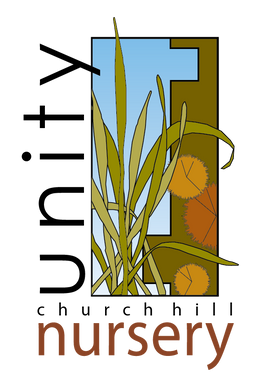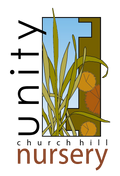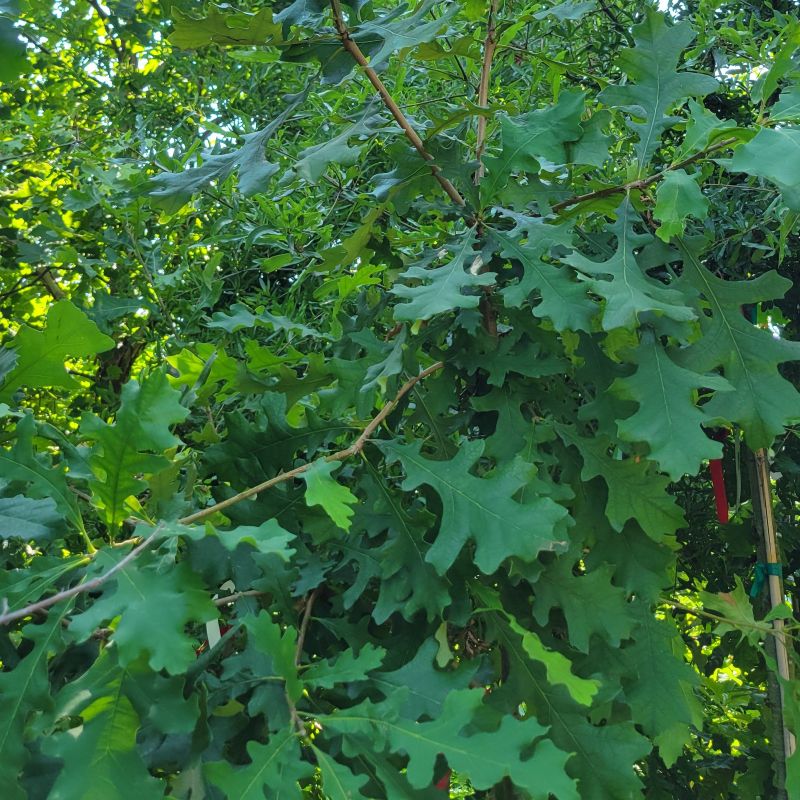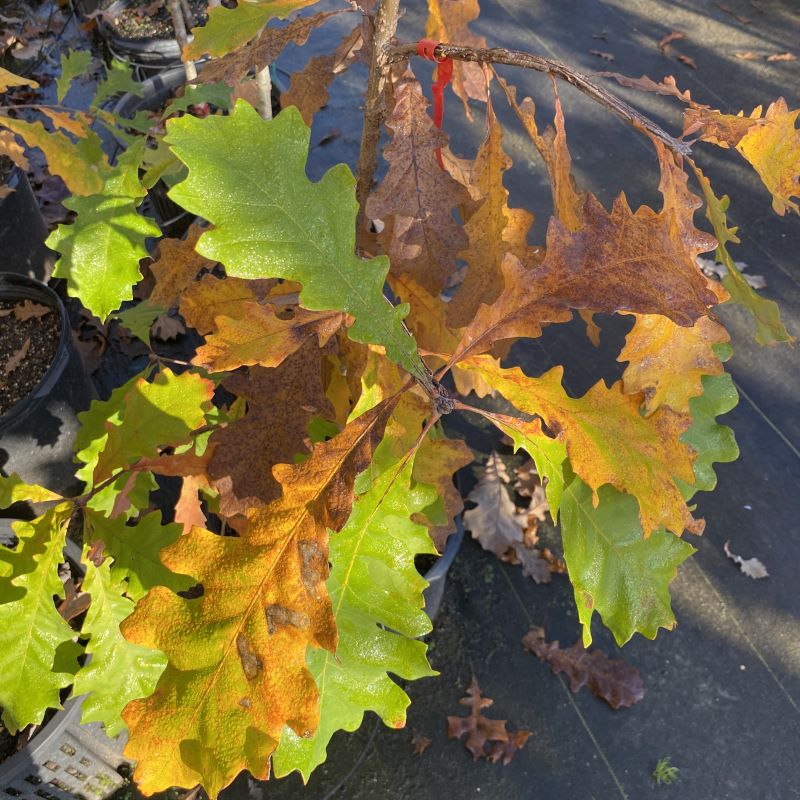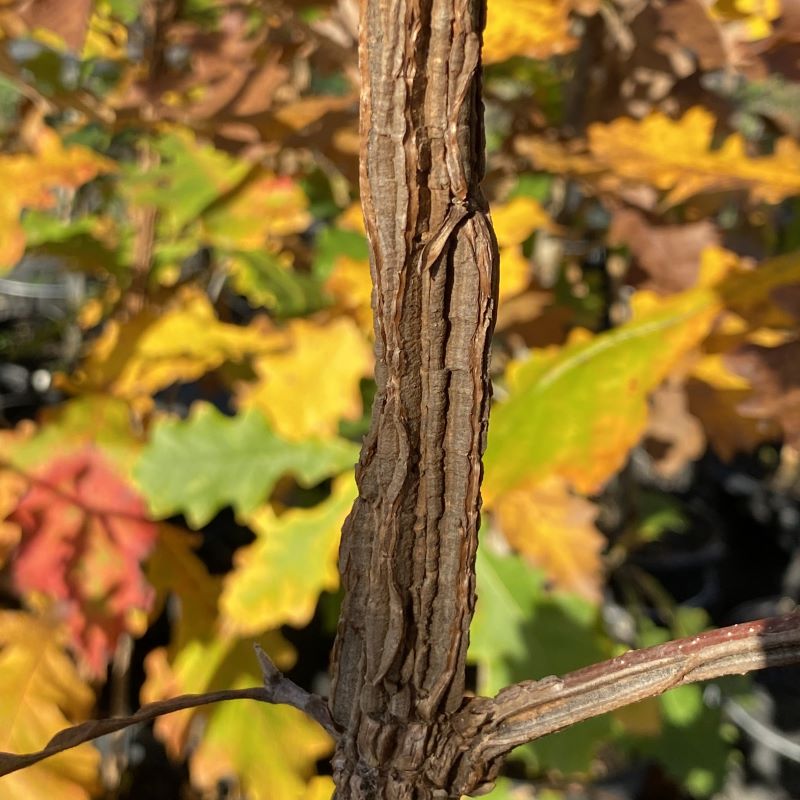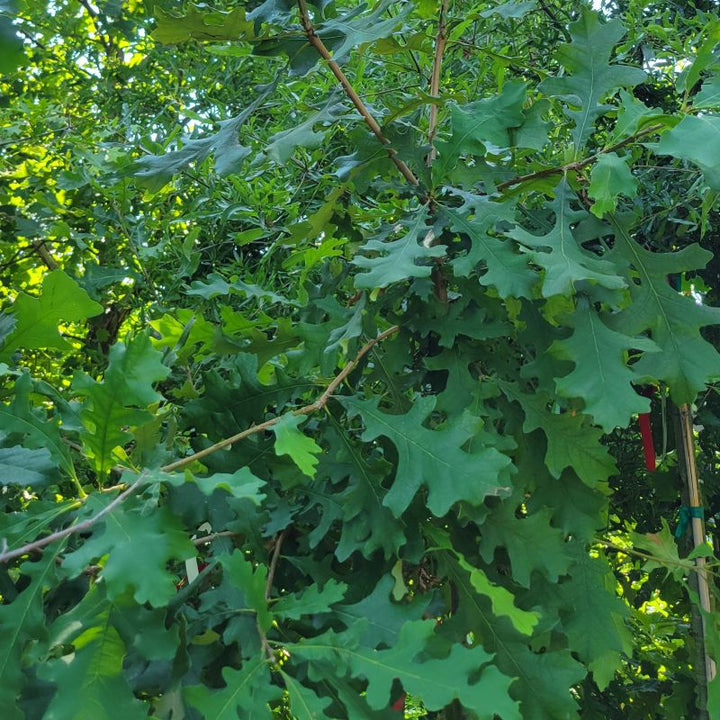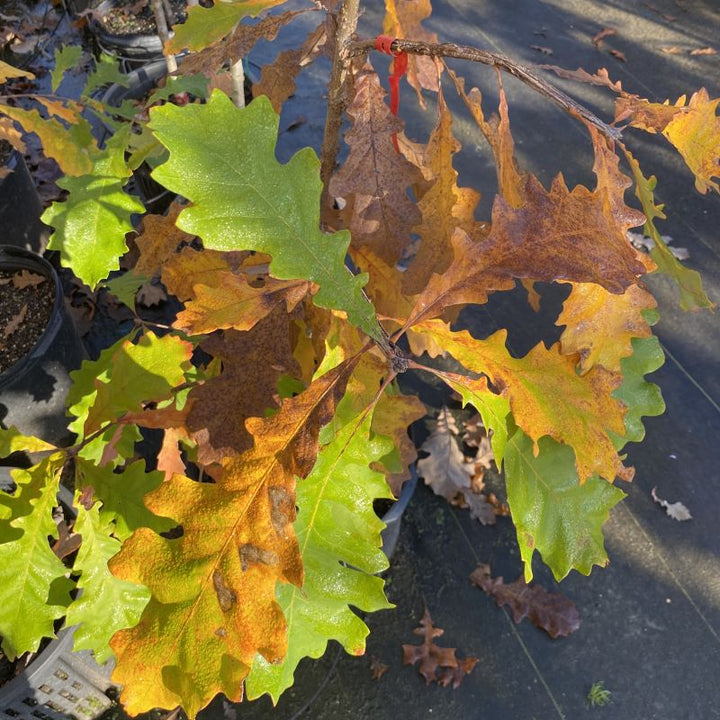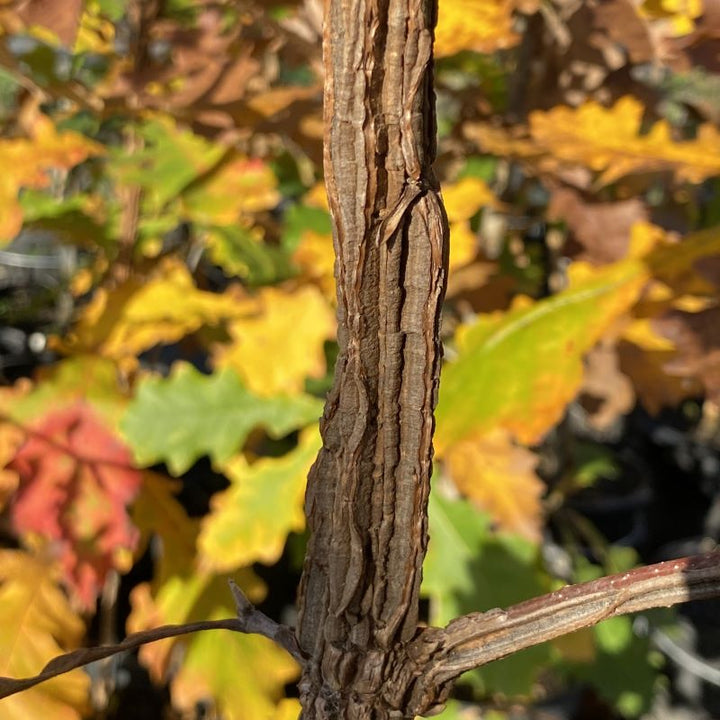Quercus macrocarpa (Bur Oak) Unity Grown
- In Stock
- Inventory on the way
Quercus macrocarpa, commonly referred to as bur oak, is a large, slow-growing oak which can grow to between 60' and 80' tall depending on soil conditions, occasionally reaching towering heights of over 150'. Bur oak is found in nature in low-lying woods and valleys, but can also be found in drier, upland areas so long as they're provided with moist, well-draining loam. Quercus macrocarpa is a great choice as a shade tree for large lawns or parks, as it often grows wider than it grows tall, with a canopy of typically around 100' in diameter. Bur oak leaves are rather unique looking among oaks, loaded but coming to a point wider than the base, and can be easily identified by its unusual young bark, which produces cork-wood wings along its length.
Bur oak, like all other oaks, produces acorns which, for this species, are large with shaggy or scaly caps with a consistency reminiscent of burs or mosses; it may take up to 35 years for a long bur oak to begin producing acorns, but trees may live up to 350 years old. Although acorns may litter the ground in parks or yards, bur oak acorns are also ecologically valuable to a number of species including songbirds and ground birds, as well as small mammals like rodents and larger mammals like white-tailed deer.
In addition to acorn value, many oak species are regarded as important keystone plants for their support of larval butterflies and moths, and Quercus macrocarpa is no different, acting as a host to several species of hairstreak butterfly and duskywing moths, as well as many other lesser known moths and butterflies of the northeast.
